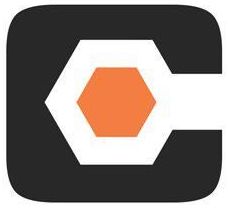The Best Takeoff Software for Construction in 2023
Construction takeoff is a necessary step toward estimating costs in a construction project. Contractors and project managers use blueprints to calculate the quantity and dimensions of materials and supplies needed for the project. That information is then used in cost estimates, project proposals, and supply order forms.
However, the process of generating the takeoff data—pulling this detailed information from project plans—can be a very time-consuming process for contractors. Traditionally, contractors performed quantity takeoff by hand using printed plans, rulers, calculators, and pencils. Fortunately for the modern contractor, companies have created takeoff software to simplify and improve this process.
This guide will cover the products that contractors and tradesmen can use to speed up and optimize the takeoff process. Starting with an overview of the process, we will then cover all the ways this technology can help and what to look for when comparing software providers. Lastly, we provide detailed reviews of the best products in the market for each purpose.
If you’re already knowledgeable and just want to see the top products, here’s a short list of our picks for the best construction takeoff software (including the best free takeoff software):
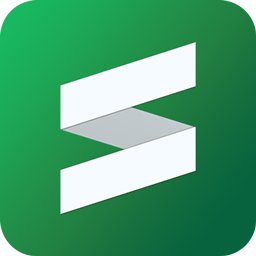 STACK STACK |
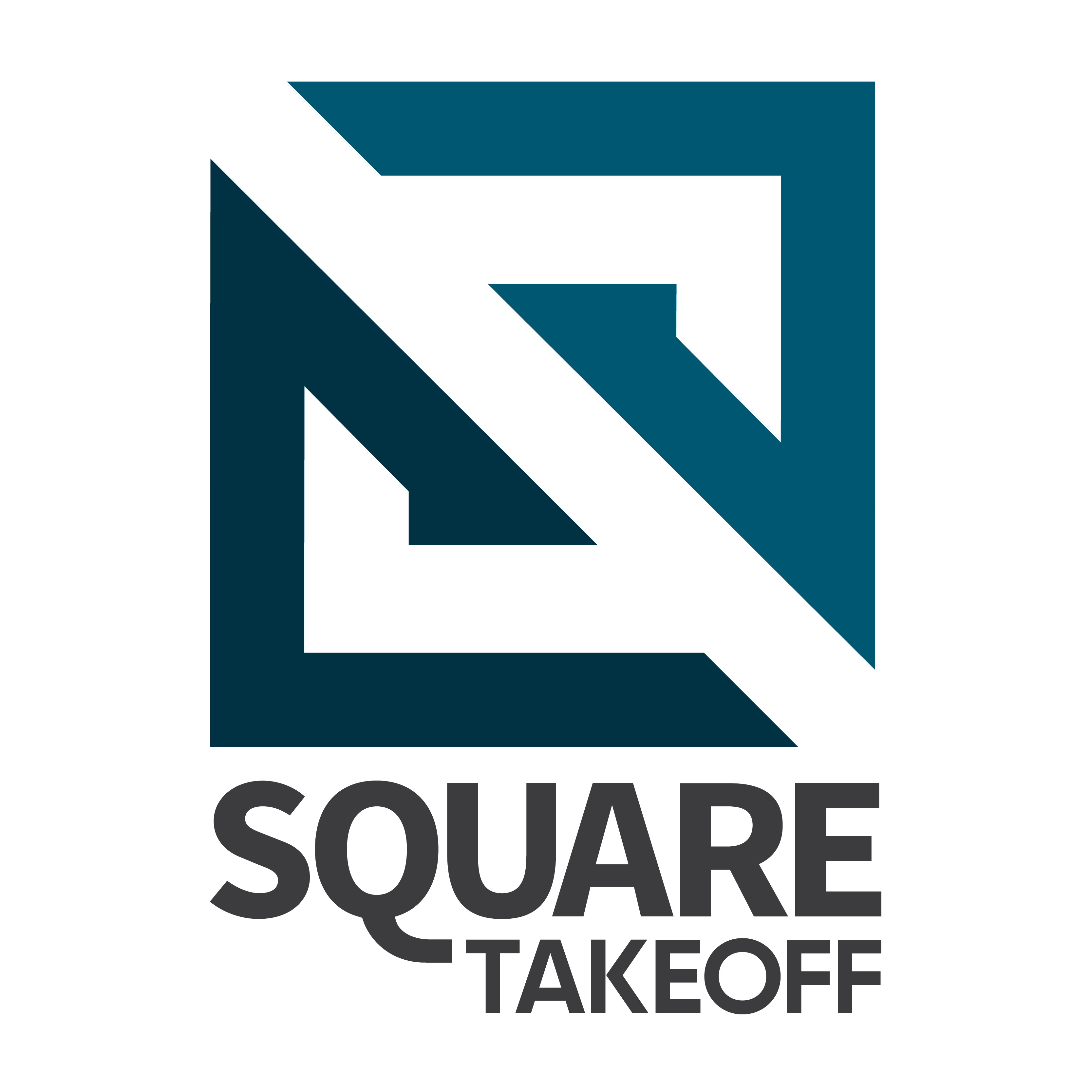 Square Takeoff Square Takeoff |
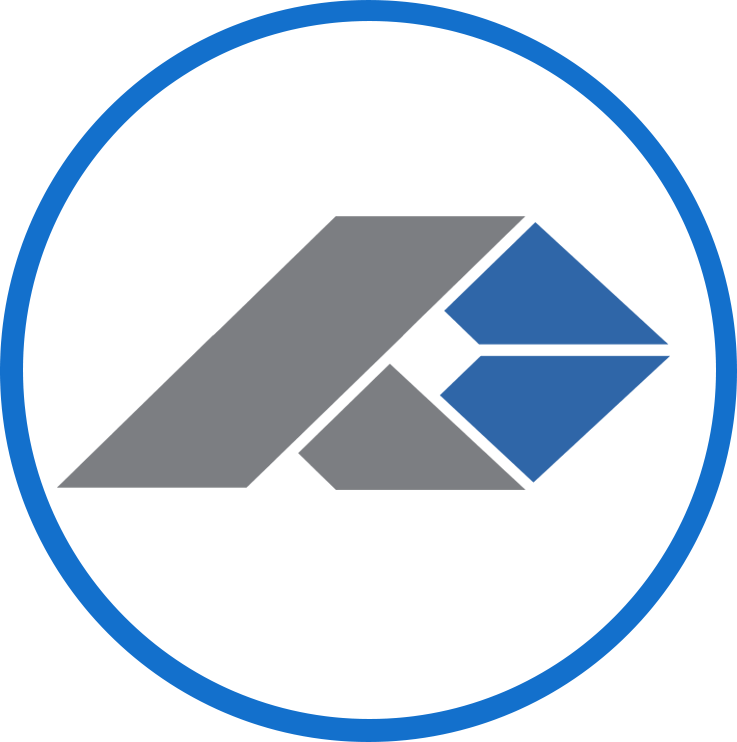 Planswift Planswift |
|
| Best For | Best Overall + Best Free | Runner-Up | Most Popular |
| Platform | Online | Online | Online |
| Rating | 10/10 | 9.5/10 | 9.5/10 |
| Learn More | Free Account Watch Demo | Free Trial Watch Demo | Get Price Watch Demo |
Understanding Construction Takeoff
Quantity takeoff is just one step of many in the construction project bidding process. To appreciate all of the intricacies of performing takeoff, it helps to first understand where it fits into the bidding process.
The Bidding Process
Before a large construction project ever breaks ground, there is an enormous amount of planning that goes into it. Typically, a project sponsor or business owner will work with a team of engineers, architects, and designers to create blueprints for their building or infrastructure project. Once the plans have been finalized, the project owner must find contractors to actually build out the designs, and at a fair price too. This is where the bidding process begins.
The project owner, which may be a business, state government, or federal agency, will typically compile a group of documents, known as the bid package, which summarizes the project details. It will include project blueprints and other key information about the project’s location and scheduling requirements. This bid package is sent to a number of contractors or, for government-sponsored projects, posted publicly, and made accessible to any contractor.
Any contractor who would like to work on the project must submit a detailed summary of required materials, labor costs, and schedules to the project sponsor by the bid date. This detailed cost and scheduling summary is often called a bid, or project proposal.
In the majority of cases, the contractors with the most competitive bids that meet the project’s requirements will earn the work. For government-sponsored projects, the most competitive bid is required to win the project by law.
So there is an incentive for contractors to create estimates that are as accurate as possible. Contractors that confidently understand material and labor costs can create more competitive project proposals and still generate profit on projects. But creating detailed and accurate cost estimates with material requirements is a time-consuming and difficult task. How can contractors quickly and accurately generate such detailed information from project blueprints?
In order to generate accurate estimates, contractors must pull or take off quantity and material information from the project’s blueprints. Let’s learn more about this process.
What is Construction Takeoff?
In construction, takeoff, sometimes called quantity takeoff or material takeoff, refers to the counts and measures of materials and labor required for a construction project.
The takeoff process involves contractors and estimators reviewing project blueprints and literally “taking off” or extracting the quantity and material requirements for the project. This information about the required materials and supplies is then used to estimate costs used in the project bid.
In order to extract these details from the project’s plans and blueprints, contractors must reference the plan’s measurements and annotations and then use those numbers to calculate the different quantities of various supplies and materials. Examples of takeoff items include:
- Counts of studs, joints, light fixtures, or beams
- Lengths of cable, wiring, trim, piping, or rebar
- Areas of flooring, grass, or drywall
- Volumes of landscaping material like dirt, sand, and rocks
Traditionally, taking this information out of project blueprints has been done by hand using rulers, pencils, and calculators. As you can imagine, this process can be very tedious and difficult to do accurately.
In the last 20 years, digitizers have helped estimators speed up and improve accuracy of the takeoff process. An example of a blueprint digitizer is a handheld pen-like tool that tracks lengths as you drag it across blueprints to help more accurately measure lengths.
These tools have been handy and helpful for contractors over the last couple of decades, but more recently, computer technology is helping to turn the process entirely digital, further improving speed and accuracy.
Interested in Estimating Software Instead?
 STACK
STACK |
 ProEst
ProEst |
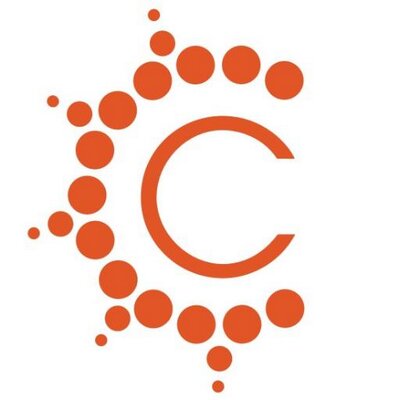 Clear Estimates
Clear Estimates |
|
| Best For | Estimating & Takeoff | Best Overall | Small Contractors |
| Rating | 9.5/10 | 10/10 | 9.5/10 |
| Learn More | Free Account Watch Demo | Get Price Watch Demo | Get Price Watch Demo |
Construction Takeoff Software & Features
Gone are the days that a contractor must manually comb through paper prints to generate a list of materials one-by-one. Takeoff software exists specifically to help estimators through this time-consuming and tedious process.
What Is Construction Takeoff Software?
Construction takeoff software refers to computer programs that aid users in extracting material counts and estimates from digital blueprints. Takeoff software often comes equipped with features to generate cost and labor estimates as well.
Takeoff software typically references digital formats of the blueprints. Typically, the software will support most of the common file types for blueprints, which include SVG, DXF, DWG, and even PDF or image files.
With the digital versions of blueprints, estimators can then point, click, and drag information off of the project plans, rather than manually calculating quantities and measurements—a method that is prone to error.
The specific workflows and methods used to pull this information from the prints will depend on the software provider.
Construction Takeoff Features
Software developed by different providers will use varying workflows, but most offer a similar set of features. Here, we cover some of the key features that takeoff tools can offer to speed up and improve accuracy of the takeoff process for contractors and subcontractors. The features are categorized by which aspect of the takeoff process they improve, including quantity takeoff, estimating, and trade-specific tasks.
Quantity Takeoff Software Features
- Counts – Virtually all takeoff tools should give the ability for users to count items on the digitized plans, usually with point-click methods.
- Auto-count – More advanced takeoff software can use optical character recognition to automatically count how many times a specific item or figure appears in the plans.
- Linear Measurement – Basically every takeoff tool on the market will allow users to identify and measure linear components on the plans, to pull the necessary lengths of various materials. This could be piping, wiring, trim, or any number of materials that are measured in units of length.
- Area Measurement – Another basic feature of takeoff software is area measurement, which will allow estimators to identify or draw an enclosed figure to determine its area, and then the necessary amount of that material. This could be necessary square footage of drywall, tiling, or windows.
- Volume Measurement – Most tools will also give users the ability to calculate volumes from project plans, though this is slightly more advanced than linear and area measurements, since it is not always visually represented on 2D plans, but indicated in annotations and notes. Still, this is a fairly common feature.
- Advanced Volume and Surface Measurements – More advanced volume calculations require the ability to indicate variations in the shape of surfaces that bound the volume. Many tools will not address this issue, but require estimators to approximate with flat surfaces. For contractors that rarely do earthwork or concrete, this may not be an issue. Put professionals in trades who often work with materials in volumes may want to seek this feature out specifically.
- Predefined Assemblies – In general, many components of the structure within a project are assemblies of a number of components. A light installation, for instance, may include a fixture, a number of screws, a fitting, and other parts. Some takeoff tools will come with a number of assemblies included, so they can easily be called out on project plans, instead of being defined part-by-part.
- Stored & Custom Assemblies – Predefined assemblies are great, but as a contractor, you may have particular parts / assemblies that you frequently use. Or you may be particular about the configuration. Custom assemblies is a feature that allows users to define their own assemblies to speed up takeoff. Without this, contractors will have to repetitively takeoff each use of the same assembly in the prints.
- Collaborative Takeoff and Editing – This feature will primarily exist with cloud-based takeoff products that are designed for use with large teams. Typically, the takeoff process for a given structure can use materials from multiple subcontractors involved on the project. By allowing them to both use the same digital space to perform takeoff, they can reference each others annotations and callouts, which can help avoid errors in the estimates down the road. This feature can exist in locally installed products if they include technology to sync edits over internet connection.
- RFI Creation – Sometimes during the takeoff process, a contractor or subcontractor may notice some ambiguity, or what may seem like a mistake on the drawings. Being able to quickly put together a request for information (RFI), subcontractors can efficiently ask for more information from the project sponsor, without breaking their workflow. With this feature in the takeoff tool, users can include screenshots and files to submit with the RFI for clarity.
- Plan Overlays – This feature is the ability to create layered takeoff and annotations. For example, you may want to keep different materials on different layers as you perform takeoff on the blueprints. This makes it easier for users to organize their takeoff process.
- Multiple Input Formats – Most takeoff software will allow users to input blueprints using a variety of file types (SVG, DXF, DWG, PDF, JPEG, etc.) and sources of input (CDs, email, portable drives, etc.). But it’s worth confirming that the program supports the file types and methods of input you work with.
- Plan Text Search – Some takeoff products use optical character recognition technology to allow users to search blueprints for text, similar to “Ctrl + F” in a web browser or text editor. This can be hugely helpful when searching for information like counts and descriptions within annotations and callouts.
- Material / Quantity Takeoff Summary Report – Once takeoff is finished, the majority of tools output the list of materials with counts, lengths, volumes, etc. This is often exportable as a CSV or Excel file, and can sometimes be sent right into estimating and bidding tools that the software integrates with.
There are many other features that takeoff providers might offer to improve the speed and accuracy of the takeoff process; it would be impossible to list them all. But this list is a good representation of the most common time saving takeoff features to look for.
Estimating Features
Not all takeoff solutions include estimating capabilities. Many takeoff solutions only address the problems associated with pulling quantity data off of project blueprints. But many products do include estimating capabilities, and some are even complete 2-in-1 takeoff and estimating solutions.
Even though you may only be looking for takeoff software, it’s worth knowing some of the potential features a new solution could provide. These capabilities could bring a significant improvement over your existing estimating process or software. This list contains some of the most useful estimating features that can be found within popular takeoff software:
- Material and Parts Cost Database – It is common for many of the more complete takeoff solutions to include and maintain a database of pricing information for materials based on distributor and location. This is immensely useful for estimators, so that they don’t need to manually look up item or material costs. Even if the user can get better pricing through their personal relationships, they can typically add custom pricing and information to use in conjunction with the included database.
- Excel / Estimating Software Integration – Most businesses and many contractors make use of Excel templates and other software to manage the estimating bidding process. Some takeoff products, like PlanSwift, allow integration with Excel and some third party estimating software, so users can easily pull or send data from other programs.
- Cost / Requirements Calculators – Some products will include useful formulas for electricians and HVAC contractors. As the user performs takeoff, some programs will automatically input values into formulas to help define power, heating, and other requirements.
- Labor Calculations – Sometimes, certain assemblies used within the project will have a known labor commitment associated with them. Some advanced takeoff / estimating tools will include the ability to output the cost of labor for these assemblies.
Complete estimating tools will have these and many other features. These are just some of the most important and relevant estimating features that many takeoff solutions include. For a complete list of estimating software capabilities, refer to our best estimating software guide. For more information on job costing and labor calculations, refer to our construction accounting software guide.
Trade-Specific Features
Many quantity and material takeoff solutions offer features to assist professionals in specific trades. Some trades, like earthwork and landscaping, may require specific features, like 3D takeoff tools. If you do need takeoff for a specific trade, we highly recommend seeking out those features as you assess products. Here are some of the key things to look for as a professional in the following trades:
- Concrete – For concrete contractors, it is helpful when the software can measure volumes of concrete, accurately subtracting volumes of rebar and reinforcement materials. Since concrete work often involves working in volumes, it is helpful if the takeoff tools can calculate accurate volumes for complex shapes. Of course, pre-built assemblies for concrete elements which include rebar are useful as well.
- Electrical – Electrical contractors should be among the most picky when choosing a takeoff solution. Along with determining the lengths of wires, which can be tricky, there are multiple calculations that electrical contractors need to make while performing takeoff to determine power and output requirements, which ultimately determine the materials they need. The best takeoff solutions for electrical work will store those calculations and allow estimators to automatically calculate the requirements for different parts.
- Flooring – Contractors who frequently install flooring can benefit from solutions with optical recognition features. Some of these tools can automatically spot floored, tiled, and carpeted areas on the digital plans, which means the user won’t need to trace the area. This can be a big time-saver.
- Drywall – Drywall contractors can also benefit from the same area-calculating features mentioned for flooring above.
- General Contractors – For general contractors, a robust set of takeoff tools that solve the detailed problems for each trade is very helpful. More helpful, however, are collaboration tools. General contractors frequently need to assemble bids from their subcontractors to create a complete project proposal. Having a takeoff tool that allows contractors to work with their subs in the same environment can help ensure they are on the same page and save significant time. Additionally, general contractors could benefit more than the average professional tradesman from a product that addresses the entire bidding process. Keeping project data within one system can both simplify the workflow and save money in software licensing costs.
- HVAC – Heating, Ventilation, and Air Conditioning contractors need to easily measure room volumes to determine heating requirements, which dictates the materials and parts needed for the project. Software that can do this automatically is a big help to HVAC contractors during takeoff.
- Landscaping & Earthwork – As we’ve mentioned, landscaping and earthwork contractors should find a takeoff product that can accurate measure complex volumes and areas. The ability to simply calculate these tricky values quickly is essential for takeoff in this field.
- Masonry – Similar to concrete work, using assemblies that include rebar and reinforcing materials can save masonry contractors a significant amount of time during takeoff. Additionally, a product database that knows various brick and stone sizes and costs can be helpful too.
- Painting – When an area that needs to be painted is taken off of the plans, it is ideal for the painting contractor if the takeoff tool can accurately calculate the volume of paint, primer, and brushes / supplies needed to accomplish the job.
- Plumbing – Custom assemblies are the key feature that plumbing tradesmen should look for. As you measure lengths of piping, it is helpful if the elbows, tees, and couplers, can automatically be placed and counted based on rules set by the user.
- Roofing – Roofing contractors can benefit from a takeoff solution that accurately counts the number of tiles, roofing nails, and other materials based on the area of the roof. Quick area calculation tools are also helpful here.
Other professional tradesmen in steel, carpentry, and other specialty trades may also benefit from trade-specific features. While we can’t cover them all, contractors should consider any intricacies associated with the takeoff process in their trade and seek features that mitigate those challenges. In general, contractors from every trade can benefit from the following features:
- Prebuilt trade-specific assemblies and / or customizable assemblies
- Integrated material pricing and distributor database
- Automatic labor, time, and cost estimates from takeoff
Additional Features
Lastly, some takeoff products may also be equipped with bidding or project management tools; some may even be integrated components of complete construction management software suites. We won’t cover features beyond takeoff and estimating, but know that this software comes in many forms. Several of the products we review below, such as PlanSwift and On Center, offer much more than just takeoff. Explore these and other products to see whether any features outside of takeoff and estimating will help improve the efficiency of your business.
Construction Takeoff Software Cost
Construction takeoff tools are some of the most transparently priced technologies a buyer will research. While broader construction project management solutions may have more complex pricing models, takeoff providers will typically charge a flat fee to download the product or a monthly licensing fee for access to online products.
What is the average cost of construction takeoff software?
The average cost of a quality construction takeoff software is $85 per user month for online products and $975 for a download of an on-premise product. Often providers may include additional fees for ongoing updates and technical support.
The exact cost will obviously vary by software provider and the needs of your business, but for the time savings and efficiency these tools provide, these products are a bargain. Reference this table of construction takeoff software pricing:
| Product | Takeoff Cost |
| STACK | $84-$150 per user per month |
| PlanSwift | $1,595 per download |
| eTakeoff | $950-$1,895 per download |
| Bluebeam | $349-$599 per download |
| PrebuiltML | $40-$110 per user per month |
| Buildee | $99 per user per month |
Free Takeoff Software
There are also several free takeoff software products on the market, but they are more limited in their capabilities. Some may restrict the number of projects while others have limited features compared to more robust paid products. However, depending on the size and needs of your business, a free takeoff solution could be all you need. Try these free construction takeoff software options if you think a simplified solution would work for you:
#1 STACK Free
- Best for: Best Free Online Takeoff Software; Best Free Takeoff Software for Mac
- Platform: Online
- Our Rating: 10/10
- Visit Site >
#2 eTakeoff Basic
- Best for: Best Free Takeoff Software for Windows
- Platform: Online
- Our Rating: 9.5/10
- Visit Site >
#3 On Center PlanViewer
- Best for: Runner-Up
- Platform: Windows
- Our Rating: 8/10
- Visit Site >
Finding The Best Construction Takeoff Software
When comparing different construction takeoff software options, buyers should consider several factors about the software and the company that develops it before making their choice. Here are the most important things to consider:
Company Reputation & Customer Service
Whether for product training, troubleshooting, or general customer service, it is likely that you or an employee will interact with a representative of the company you buy software from. It’s worth checking in on this company’s reputation with current and past customers. Using third party business review agencies, like the Better Business Bureau and Trust Pilot can help to inform buyers about a business’ reputation.
Accessibility & Deployment
If being able to access your takeoff software on-the-go is important, or if you need it to run on a certain device or computer, then consider the system requirements of the products you review. Some locally installed products require Windows operating systems or won’t be accessible from remote locations.
Product Design & User Experience
It’s always worth getting a trial and exploring a software platform before buying it. Unfortunately, by today’s standards, many programs are out of date and difficult to use. But luckily, most software providers offer free trials of their products. Make sure that you are comfortable with the software’s interface and design and always get a trial or demo when considering an estimating, takeoff, or bidding tool.
Features
Of course, the software should make you and your employees more efficient and effective to be worth any cost. So choosing a product that has the features that solve the specific challenges your business faces. For electricians, consider takeoff tools with specific formulas and assemblies for electrical work. Other specialty contractors, like plumbing and HVAC specialists, can also find takeoff tools equipped specifically for their trade.
Integrations
Along with the features that the takeoff software includes, it is more important than ever to consider the integrations to third-party software. If your company is attached to a specific project management, bidding, building information modeling (BIM), or estimating tool, the takeoff solution you choose should at least be compatible with the file types and formats of these other tools. Often, these takeoff tools are designed to integrate with other products. Seek products that play nicely with any tools that your company has committed to.
Pricing
Choosing the right product will actually save or even help generate money for your business. Construction pros shouldn’t overpay for a tool that doesn’t have a big impact on their business; however, sometimes the most powerful tools can be fairly expensive. If a tool seems right, but is above budget, take a hard look at the time savings and increased deal flow that you can expect. Often, companies who upgrade to a new system significantly increase their deal capacity through efficiency and can improve their bottom line. The cost of these tools should be measured relative to the positive impact they have on the business. Keep in mind the significant time savings that takeoff software offers above the manual process.
Takeoff Software for Mac & iPad Users
While many software companies are transitioning their products to the cloud (online), some popular takeoff software solutions have to be installed and run on your computer locally. Furthermore, many of these takeoff software companies only offer a Windows version. So, if you are a Mac user, it’s important to either choose a cloud-based takeoff solution that you can access online using a web browser or make sure the company offers software that’s compatible with your Mac or iPad.
The following popular takeoff software options are either cloud-based or have a Mac version:
- STACK (cloud-based)
- Autodesk Takeoff (cloud-based)
- Procore Takeoff (cloud-based)
- Square Takeoff (cloud-based)
- Countfire (cloud-based)
- Bluebeam (iOS version)
- Buildee (cloud-based)
Best Construction Takeoff Software
STACK Takeoff (Best Overall; Best Free Version)
Overview
STACK is a cloud-based construction takeoff and estimating software solution that allows users to quickly measure digital plans during the project estimating process. STACK is one of the most popular takeoff software products on the market. It is designed to work well for all major construction trades, including: general contractors, concrete contractors, home builders, interior finishers, landscape specialists, masons, roofers, and other specialty trades.
STACK has one of the best reputations with their customers of all takeoff and estimating software companies, sporting an A+ rating from the Better Business Bureau and high scores across all of the major software review sites.
Pros
- Fully cloud-based solution that saves takeoffs in real time
- Excellent user interface, training, and customer support
- The ability to create complex custom assemblies for reuse on other projects
Cons
- Annual renewal costs can be expensive
- There are occasionally wait times to get in touch with customer support
- Especially large projects can cause the software to slow down
- STACK offers a ton of customizations, but of course, some customers want more
Features
STACK’s remarkable takeoff solution is easy to pick up and fully available online from any PC, Mac, or iPad. Users can upload plans from Google Drive, Dropbox, Box, Evernote, or from their local device. STACK also integrates with a number of other products, including Procore, Buildertrend, SmartBid, and Dodge Data and Analytics.
STACK is also one of the best products for users who value on-the-go access and team collaboration features. As a cloud-based solution, STACK makes it easy to work on projects from any location or device. STACK also provides a centralized hub where teams can work together on projects. All updates and edits are shared with teammates immediately, so there is no need to worry about overwriting another team member’s progress.
Outside of integration and collaboration features, STACK has a full suite of capabilities designed to make the quantity takeoff process more efficient. The software uses powerful automation techniques, like auto-count, area measurement, and volume measurement, to quickly and accurately determine material quantities. Additionally, STACK offers a library of pre-built assemblies and items, reducing the need for repeating complex calculations.
When it comes to organization and reporting, STACK users can:
- Organize projects and pages quickly via the drag and drop interface
- Overlay multiple drawings to quickly identify differences between revised plans
- Save and compare alternate bids
- Quickly search through all plans using STACK’s powerful search feature to find what they’re looking for
- See detailed project cost reports and create custom reports
- Create detailed estimates and branded proposals
- Use the integrated bid calendar to see upcoming projects and deadlines and keep the entire team aligned
There are four different subscription tiers that range in price from $0 to $5,499+ per year. Features and number of users included vary between each pricing level so you can select the one right for your business.
Stack Cost
Each of STACK’s subscription tiers is billed annually on a ‘per-user’ basis. The free version of STACK takes just seconds to get started with. The capabilities are slightly limited compared to the paid versions, but it is an impressive product nonetheless. STACK Free only allows a maximum of two projects per account and only offers access to a given project for seven days. So once you’ve added a new project, you have seven days to complete all of your takeoff tasks within STACK. Of course, you can have unlimited access to your projects by upgrading to any of the paid versions.
STACK’s paid options range from $2,499 per year up to $5,499 or more. The Start pricing tier includes access to all features for a single full-access user and three view-only users. The Grow tier is for teams of up to three full-access users and six view-only users. The highest level Build tier is for four or more full-access users and seven or more view-only users.
Final Verdict
STACK scored above or in line with other estimating products in every metric that we review. It’s hard to deny the powerful tools that STACK offers in their product. Furthermore, their transparent and fair pricing is refreshing to see. STACK is an easy choice as Best Overall Construction Takeoff Software. And because they offer nearly all of their key takeoff features in their free product, we also rated them Best Free Takeoff Software.
PlanSwift Takeoff (Most Popular)
PlanSwift is one of the most popular takeoff solutions on the market, offering a user-friendly and easy-to-learn interface, great features for a variety of trades, and seamless integration with Microsoft Excel. While PlanSwift is not compatible with Apple operating systems and lacks built-in cloud features for collaboration and storage, PlanSwift is nonetheless one of the top choices out there for takeoff software.
Pros
- Incredibly feature-rich and highly customizable tool
- Combines both takeoff and estimating functionality into a single product
- Excellent price for one-time download and unlimited use
Cons
- Not cloud-based; incompatible with Apple devices
- User interface is dated and it can take a long time to load plans
- Software is updated less frequently than that of newer competitors
Features
PlanSwift offers a strong suite of features, with important tools to import project plans, calculate material and labor totals, and create custom assemblies. They also include many custom features for different construction trades, including specific takeoff tools for general contractors, concrete, drywall, electrical, flooring, framing, decking contractors, HVAC, insulation, landscape, masonry, painting, and plumbing.

PlanSwift’s software includes both takeoff and estimating capabilities, which is enormously convenient for users. Most takeoff solutions can send or export takeoff data to use in separate estimating tools, but PlanSwift offers both technologies in one system, saving you the trouble of identifying and using two software solutions.
Product reviews around the web indicate that PlanSwift offers strong customer support, and our interactions with PlanSwift representatives demonstrated the same. While we had positive experiences during interactions with PlanSwift’s team, it’s worth reaching out independently and making sure you’re comfortable with the level of service they provide.
PlanSwift Cost
PlanSwift offers a free 14-day trial for users to test out the software without commitment. After the trial period, the software is $1,913 to download. Optionally, users can include ongoing software updates and support for $318 per year. Multi-hour training sessions are also available to purchase for a flat one-time cost of $300. All-in-all, the price of this tool is very fair, considering that it only requires a one-time fee to download and have unlimited use.
Final Verdict
PlanSwift takeoff is a great product that can fit the needs of general contractors and tradesmen alike. We recognize PlanSwift as the Most Popular Construction Takeoff Software, and they are a runner-up on our list of the best takeoff solutions.
Autodesk Takeoff Software (Best for Enterprise Customers)
Autodesk is a leading provider of software products for construction professionals and recently added a takeoff solution to the mix. While the product is still fairly new, Autodesk Takeoff has already earned positive reviews from users for the speed and accuracy it brings to the takeoff process.
Pros
- Cloud-based product that easily integrates with other Autodesk construction software
- Strong company reputation with 40 years in the construction software industry
- Capability for 2D and 3D takeoffs in the same product to increase speed and accuracy
Cons
- Not the best solution for companies not already using other Autodesk products
- Newer product without long track record
- Pricing is on the higher side for the category
For four decades, Autodesk has been a pioneer and leader in the development of software for building professionals behind products like AutoCAD and Revit. In its efforts to provide comprehensive, high-quality tools for construction businesses, Autodesk announced the addition of its Takeoff software in 2020 and launched it in 2021. The new product is part of Autodesk Construction Cloud, a cloud-based suite of products supporting projects through every stage of the construction process.
As a cloud-based solution, Autodesk Takeoff also increases collaboration and transparency across the project and makes it easier to share data across project teams. All of the Construction Cloud software uses a shared system for document management, Autodesk Docs, which ensures that teams are working off of the same up-to-date information. Data from Autodesk Takeoff can also easily be integrated into other Autodesk solutions like Build and BIM Collaborate.
One key selling point for Autodesk Takeoff is support for automated 2D and 3D takeoff in the same application. The product also allows for flexibility and customization in the models and formulas used to generate quantities. This eliminates the often cumbersome process of bringing together data from multiple applications and reduces risks of errors or duplication, allowing for more accurate bids.
Autodesk Takeoff advertises a price of $104 per user per month ($1,250 per year) when billing annually or $155 per user per month ($1,860 per year) when billing monthly. This places Autodesk Takeoff toward the higher end of cost for takeoff solutions, and it is additionally important to recognize that maximizing functionality from Autodesk Takeoff involves the use of other Autodesk products. Businesses can also call Autodesk directly about pricing across a whole project or company or for more flexible subscription options.
For firms that already work with other Autodesk products, Autodesk Takeoff would be a seamless addition to construction workflows. And because the Autodesk Construction Cloud suite has been crafted to support the entire construction process from design to turnover, we recommend Autodesk Takeoff as Best for Enterprise Customers who need comprehensive solutions to handle numerous complex projects.
Buildee Takeoff (Best User Interface)
Buildee is a newer competitor in the takeoff software market, having been founded in 2018. While their track record is not as long as some other takeoff tools’, Buildee offers some of the most intuitive, aesthetically appealing software on the market.
Pros
- Cloud-based product that will work on any device
- User interface is among the best in the industry
- Free 14-day trial and flexible payment plans
Cons
- Newer entrant that lacks the track record of its competitors
- Limited documentation and resources available online
- Can only contact the company via email if you aren’t a customer
Features
Buildee is a cloud-based product, so it will work on any device, regardless of whether you’re on desktop or mobile and what operating system you run. Being online also means that files can be accessed from anywhere and that it is simple to share projects and collaborate with other team members.
Buildee’s best strength relative to the competition is its clean, simple interface and intuitive controls. The software allows users to upload files directly from their computer in a number of different formats and begin takeoff in virtually no time. With simple point-and click controls, the interface is easy to learn and get started with. Data from takeoff automatically feeds into Buildee’s estimate generator, saving users time while improving accuracy. Reviews from users around the web consistently tout Buildee’s design as top-notch.
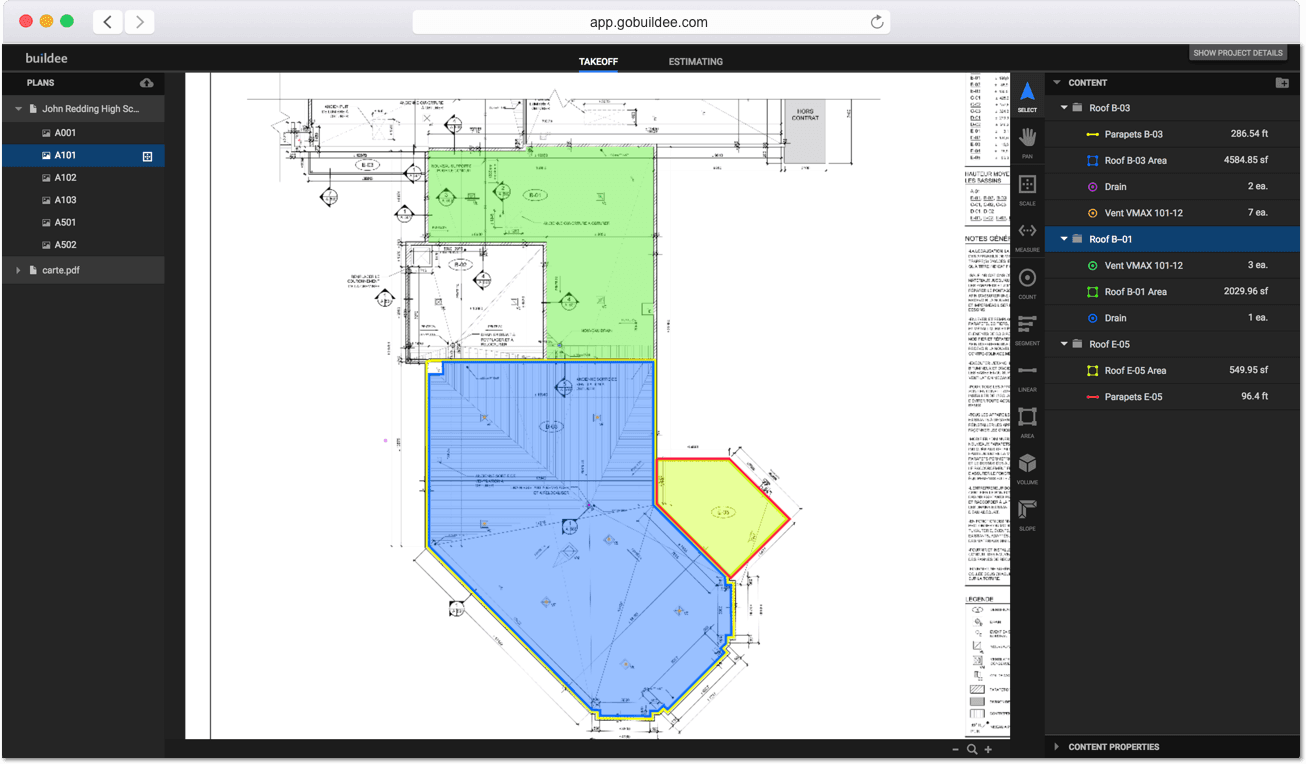
Buildee Cost
Like some other competitors, Buildee offers a free trial period to allow users to get acquainted with the software. Buildee’s trial period is 14 days, and during that time, users have access to all the features from both takeoff and estimating modules of Buildee’s software.
Buildee offers both monthly and yearly payment plans. A monthly subscription will cost $99 per month per user, while users who pay annually receive a slight discount at $999 for the year (or $83.25 per month). The paid plan includes unlimited projects and storage.
Final Verdict
While Buildee is a newer product, its impressive design and fair price have it poised for future success. We confidently recommend Buildee in our list of the top construction takeoff software and believe it has one of the best user interfaces on the market.
Countfire (Best for Electrical Estimating)
Countfire is an online takeoff software designed specifically for electrical contractors and estimators.
Pros
- Powerful auto-count technology
- Interface makes it extremely easy to spot and highlight revisions across specifications
- Excellent customer support and product documentation
Cons
- Steep learning curve
- More expensive than some competitors
- Large files can cause the software to run slower than other locally-installed products
Features
Countfire can be accessed from any device that has a web browser. The product is simple to use, and its automated features improve both speed and accuracy for its users when counting objects This short video highlights some of Countfire’s key features that make it so powerful:
The online interface is modern and intuitive. And because the product is browser-based, it works the same on both Mac and Windows. While it is best for electrical estimating and takeoff, Countfire has features that simplify any takeoff process, including linear and area measurements, automatic counting, and auto-count on revised documents. The company also provides dedicated support staff to its customers.
Countfire Cost
Pricing information about Countfire is not publicly available, but if you would like to try it out, Countfire offers a 14-day free trial for those who are not yet ready to commit. Once you start a trial, you can get connected with a member of the Countfire team for more information about cost.
Final Verdict
Because it is built specifically with electrical estimators in mind, we recommend Countfire as the Best Electrical Takeoff Software.
Square Takeoff (Runner-Up)
Square Takeoff is a cloud-based product that automates the takeoff, estimating, and bid management processes for construction projects.
Pros
- Cloud-based solution that can be accessed on any device
- Free 14-day trial and generous discounts for renewing customers
- Includes estimating functionality and extensive integrations with other software products
Cons
- Slightly more limited feature-set than other products
- User interface can take some time to get used to
Features
As an online tool, Square Takeoff can be accessed from any device that has a web browser, which means that it works equally well on Windows, Mac, or mobile devices including iPads and iPhones. Users just need to log in from the Square Takeoff homepage to access their company’s files. Being cloud-based, Square Takeoff also has good tools for collaboration in real-time between team members in different locations.
Square Takeoff is great for both residential and commercial construction, and it is robust enough to work for general contractors, plumbers, roofers, and most other specialists. With an intuitive point-and-click interface, Square Takeoff makes counting and calculations for takeoff easy. Check out this video to get a quick overview of Square Takeoff’s capabilities:
Square Takeoff isn’t just a takeoff tool, as the name suggests. The product includes an integrated calendar and estimating tools to help users generate accurate estimates and generate winning bids. Square Takeoff is designed to integrate seamlessly with other tools like Excel, Google Maps, and Buildertrend project management software, which makes it a convenient option for managing your entire workflow. While Square Takeoff includes a materials database and labor cost estimates, it allows plenty of customization.
Square Takeoff Cost
Square Takeoff offers a free 14-day trial, allowing potential Square Takeoff customers to test out all of the features available to paid users. For full access to Square Takeoff, customers can pay $997 per user in year one and then $399 annually thereafter. With these long-term discounts, Square Takeoff is priced very competitively compared to others in the market.
Final Verdict
As a fairly priced cloud solution with a strong interface, convenient integrations, and usefulness in a number of specialties, Square Takeoff is one of our Runner-Up picks for the best takeoff software.
Procore Takeoff Software (Runner-Up)
Thanks to its recent acquisition of estimating and takeoff company Esticom, Procore has expanded its product offerings to handle the entire pre-construction phase.
Pros
- Combines takeoff and estimating into a single product
- Incorporates AI auto-count technology for a quicker takeoff process
- Integrates seamlessly with the rest of Procore’s products
Cons
- For those who are not existing Procore customers, there are more affordable standalone options
Procore combines takeoff and estimating into a single product so that users can move quickly from creating material counts to generating final estimates, and ultimately a final bid. Procore’s takeoff solution offers all the standard features that users would expect—including a large catalog of standard parts and assemblies, the ability to save custom parts and assemblies, AI-assisted auto-counts, and regularly updated rate tables—but perhaps its biggest benefit is its tight integration with the rest of the Procore ecosystem. Once an estimate is created, it can easily be turned into a customer-facing bid proposal, which once accepted, can be handed off directly to the project team.
Another benefit of Procore is the ability to add unlimited collaborators, which is included with every Procore subscription. The same goes for the company’s unlimited data guarantee—with extra storage included in your subscription you’ll never have to worry about running out of space for documents, data collection, or spreadsheets.
While Procore’s takeoff software covers a wide breadth of contractor needs, the platform can be difficult to learn for new users. Additionally, Procore is not the most affordable option on the market. For existing Procore users that are familiar with the software and can add takeoff to their subscription at a reasonable rate, Procore’s takeoff software is an excellent choice. For non-Procore users, other standalone takeoff options might be a better fit.
Procore is one of the top names in construction software, and its more recently added takeoff solution is another excellent addition to its portfolio of products. We recommend Procore as a runner-up on our list of top takeoff software due to its excellent user interface, built-in estimating and bidding features, and seamless integration with the rest of the Procore platform.
PrebuiltML Takeoff (Runner-Up)
PrebuiltML is a takeoff solution designed for tradesmen and builders. Specifically, they have tools designed for concrete, roofing, siding, flooring, masonry, and paint contractors, as well as commercial dealers, framers, and builders. The company was founded in 2012 and is one of the smaller companies on this list. Nonetheless, they offer a strong takeoff product that is well-regarded by its users.
Pros
- Powerful software with extensive feature-set
- Custom features for specific trades like roofing, paint, etc.
- Flexible export options from digital plans to material lists
Cons
- Software only works on Windows machines
- Correcting mistakes made while performing takeoff can be difficult
- Output file sizes are large
Features & Pricing
PrebuiltML offers two versions of their takeoff product: 1) PrebuiltML PROtrade for professional trade users, and 2) PrebuiltML X for framers, builders, and dealers. Each product runs only on Windows operating systems, so Mac users should look elsewhere.
PROtrade is PrebuiltML’s solution designed for professionals with trade-specific needs. This version of their takeoff technology costs $40 per license per month or $360 for the year. The key difference in this version of PrebuiltML is that users are limited to generating only six material quantity reports per month. This won’t usually be a constraint for professionals in most trades. PrebuiltML includes preconfigured formulas and advanced 3D takeoff technology that makes it suitable for most trades.
PrebuiltML also offers two versions of the technology that they advertise to dealers, builders, and framers, which are known as PrebuiltML X2 and X3. In addition to the features available in PROtrade, PrebuiltML X includes additional features like a 3D viewer and access to a database of 50 million products. X2 costs $90 per month or $900 for the year when paid in advance and includes up to 10GB of free storage for 15 team members, while X3 costs $110 per month or $1,188 per year and includes up to 100GB of free storage for unlimited team members, along with more robust tracking and reporting tools.
Final Verdict
PrebuiltML is a powerful Windows-based takeoff software for professional tradesmen, general contractors, builders, framers, and dealers. With an affordable price and solid features suitable to most trades, PrebuiltML is also one of our Runner-Up picks for the best takeoff software.
On Center Takeoff Software (Runner-Up)
On Center is an experienced player in the construction software market, having operated for more than 30 years, currently under the ConstructConnect umbrella. With a variety of tools for construction contractors and subcontractors, On Center’s products help builders of any trade with takeoff, estimates, bidding, and production control. This review focuses on their takeoff product, but On Center offers other worthwhile solutions for construction professionals.
Pros
- More than 30 years of experience in construction software
- On Center also offers estimating, bidding, and project tracking software
- Offers a lightweight free option as well
Cons
- Only available for Windows users
- User interface is less advanced than that of newer cloud products
- No standard pricing information available; interested customers must get a custom quote
Features
On Center’s takeoff solution is called On-Screen Takeoff. On-Screen Takeoff is a locally-installed solution designed to run on Windows machines running Windows 10 or later. On Center does not currently have a cloud-based option, though its former cloud version, Oasis Takeoff, formed the basis of ConstructConnect’s current cloud product.
On Center’s product has a smart feature-set that makes the takeoff process fast and accurate. With auto-counts, revision overlays, intelligent paste logic, and multi-condition takeoff capabilities, users can easily speed up the takeoff process and adapt to different conditions or scenarios. The software’s interface and user workflow are very clean and easy to follow, even though it is packed with features to improve takeoff.
On Center also offers a free tool called PlanViewer, which is a very light-weight version of their takeoff tool. This includes some of the most basic takeoff features, like linear and area measurements. It is also collaborative, so you can share plans and create takeoffs from the same file with your team.
On Center Pricing
On Center’s pricing structure is not readily available on their website. However, like many other solutions, the total price of On Center for your company will depend on the number of users and whether you also purchase any of On Center’s additional tools for estimating, bidding, and project management. Other web sources indicate that On Center tends to be more expensive than comparable solutions on the market, though On Center does offer a strong product that makes it worthwhile for many customers.
Interested users do have the option of a 14-day free trial along with a demo and conversations with the On Center team to learn more about the product and pricing options.
Final Verdict
Overall, On Center offers a strong takeoff solution, as well as many other great construction management tools. They are a runner-up on our list of the best construction takeoff solutions.
Bluebeam Revu Takeoff (Best Takeoff App for iPad)
Bluebeam is an extensive tool designed to assist users throughout the design, takeoff, and bidding processes. Bluebeam is a popular takeoff and bidding software provider with an excellent reputation among its users.
Pros
- Free 30-day trial available of Revu
- Excellent Microsoft SharePoint integration
- Unlike other companies, Bluebeam offers a dedicated iPad app
Cons
- The core software is a locally-installed solution, built for Windows only
- Software updates must be purchased for an additional fee
Features
Bluebeam’s software must be downloaded and installed on the device where it will be used. However, even though the tool requires a local installation, Bluebeam’s Studio feature allows for real-time collaboration between any team members with an internet connection.
Bluebeam Revu includes a number of features for users to assist in various aspects of the bidding process, including tools for design reviews, QA/QC, takeoffs, document management, drawing management, submittal review, RFI postings, punch process, project handover, and site logistics. While Bluebeam Revu is more versatile than some of the other products in this guide, its takeoff-specific features are less extensive than other products on this list. However, if you only need intermediate-level takeoff functionality, this software may be a good fit.
Bluebeam Cost
Whether the user needs all of the features or not, Bluebeam Revu is sold as a single product suite that includes all of its many functionalities. Because of this, Bluebeam Revu is more expensive than many takeoff-specific tools. However, users who are able to take advantage of Bluebeam Revu’s other features may still consider it a good value if it means having fewer other software solutions to deal with.
The Windows version of Bluebeam Revu Standard comes at a one-time cost of $349 per license. Users can also elect to purchase more comprehensive versions, Revu CAD ($449 per license) or Revu eXtreme ($599 per license) that have additional features and capabilities. These fees include access to Studio, its cloud-based document management and collaboration tool, but maintenance and training come at an additional cost. Bluebeam Revu also offers a 30-day trial, so you can take some time to figure out whether it makes sense for your business before you buy.
In addition to Windows, Bluebeam Revu has been available for both Mac and iOS in the past, but Bluebeam ended support for Mac in March of 2020 and new licenses are not being sold. However, Bluebeam Revu can still be downloaded to iOS at a cost of $9.99 for use on mobile devices, and while the features are not as robust as the desktop edition, the app still has many of the essential tools needed. While some other takeoff software providers have Android apps or are cloud-based and can be used on any OS, Bluebeam stands out for accessibility on Apple mobile devices.
Final Verdict
Bluebeam is a great tool, and with applications designed specifically for Apple devices, they were an obvious choice for Best Construction Takeoff Software for iOS & iPad.
eTakeoff Dimension (Most Affordable Takeoff Software)
eTakeoff Dimension is a construction takeoff solution flexible enough for use by all trades and general contractors. eTakeoff is a fairly small company, founded in 2003, and they offer a compelling product.
Pros
- Solid choice for customers looking for a less expensive (or free) takeoff option
- Flexible pricing tiers that fit a range of budgets
Cons
- The software is not cloud-based; only works on Windows machines
- Unlike other products, data is not synced across devices
- The user interface lags behind that of competing products
Features
The software is Windows-based, meaning it must be installed on a Windows operating system, specifically Windows 7, 8.1, or 10. So this product isn’t for Mac users, unless they install an emulator on their machine. This also means that data is not synced between the devices of different users. If you share takeoff responsibilities with team members, you must coordinate edits because you cannot edit the same file at the same time.
The interface is not as modern and sleek as other products on the market, but the user experience is quite comfortable and similar to that of Microsoft Excel.
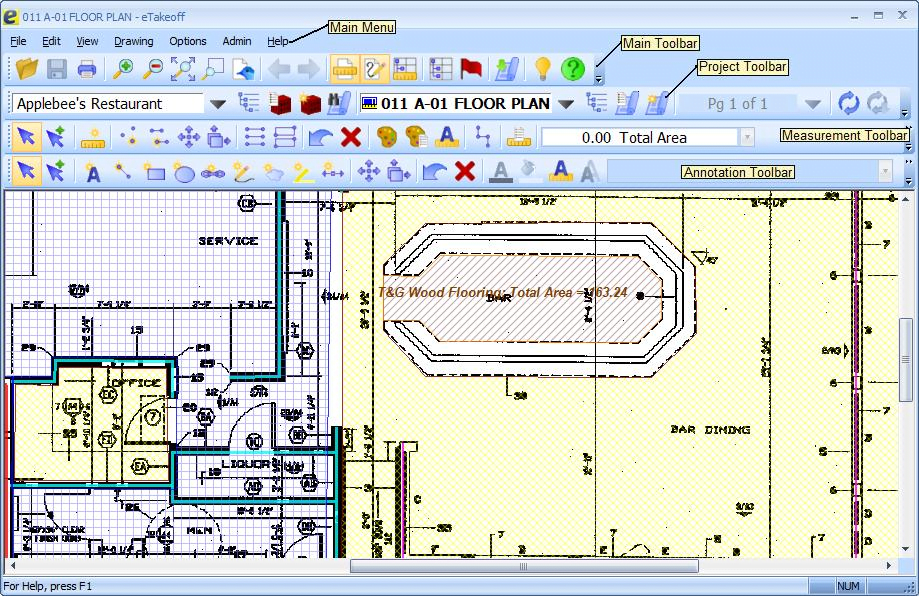
As mentioned above, eTakeoff is designed to meet the needs of basically any construction trade or specialty. Specifically, they make features for ceilings, communications construction, concrete, electrical, flooring, framing, drywall, general contractors, independent estimators, landscaping, masonry, mechanical, painting, plumbing, roofing, rough carpentry, and steel.
eTakeoff has three different versions of its software—Basic (free), Advanced, and Premier—each suited for different needs and budgets.
eTakeoff Plans & Pricing
eTakeoff Basic (the free takeoff version) includes many of the software’s key features, including basic takeoff functions and measurements like linear measurements, counts, areas, cutouts, and arcs. You also have the ability to view and print plans with the free product. Really, this tool is designed for the most basic takeoff and for sharing takeoff and plans with team members.
eTakeoff Advanced costs $950 for a download, with an optional $190 annual fee for maintenance and support. eTakeoff Advanced is also a significant upgrade in features. Unlike in the free edition, users can create and save measurements and annotations, as well as organize them in layers or by color.
The most advanced version of the software offered is eTakeoff Premier which costs $1,895 with an optional $380 for annual support and maintenance. This version includes the ability to add custom assemblies, which can significantly speed up the takeoff process for users who frequently work on similar projects. This version also includes more advanced pattern recognition technology for rapidly and automatically performing takeoff.
Final Verdict
While eTakeoff’s lack of a cloud option is a drawback, eTakeoff remains a strong choice for Windows users. Additionally, its free option and competitive pricing for its paid tiers make eTakeoff our top pick for cheap takeoff software.
References
- Better Business Bureau
- STACK
- Square Takeoff
- Countfire
- Bluebeam
- PlanSwift
- eTakeoff
- On Center
- PrebuiltML
- Buildee
- Autodesk Takeoff
- Procore
Each company featured in our guides has been independently selected and reviewed by our research team. If you select one of these companies and click on a link, we may earn a commission.
By clicking on these links, you may be taken to one of our insurance partners. The specific company listed here may or may not be included in our partner’s network at this time.




